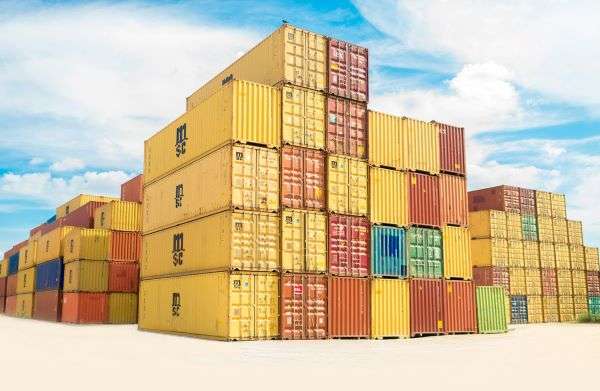Container shipping spot rates have seen a decrease for the first time in nearly three months, indicating a potential cooling in demand. This follows an early peak season for restocking, driven by U.S. tariffs on Chinese goods and other trade disruptions.
The Drewry World Container Index, a composite of eight major trade lanes, reported a 2.2% drop to $5,806 for a 40-foot unit, ending a 12-week-long increase. Despite the dip, the current rate remains approximately three times higher than the rate at the end of 2023, when cargo ships began diverting from the Red Sea due to Houthi attacks.
The second quarter of the year saw an unexpected surge in rates due to strong U.S. demand for goods. Importers rushed to stock up ahead of increased American tariffs on Chinese products and growing concerns about a potential dockworker strike on the East and Gulf Coasts later this year. However, this momentum appears to be waning.
Rate Changes Across Major Trade Routes
The benchmark rate from Shanghai to Los Angeles fell for a second consecutive week, dropping 4.9% to $6,934. The rate from Shanghai to Rotterdam remained relatively stable at $8,260. These figures reflect the easing of a previously tight market, as indicated by short-term container rates released earlier this week by Freightos, a cargo-booking platform.
Port Performance and Supply Snarls
The Port of Los Angeles and Long Beach, the busiest U.S. gateway for maritime trade, along with Europe’s two largest container ports — Rotterdam and Antwerp-Bruges, reported significant increases in container volumes during the first half of 2024 compared to the previous year.
However, these gains were tempered by capacity constraints due to the Red Sea turmoil and vessel diversions around the Cape of Good Hope, leading to port congestion at major shipping hubs, including Singapore. Industry figures suggest that these supply issues are beginning to ease.
A Potential Market Balance
Judah Levine, head of research at Freightos, suggested that supply and demand are closer to balance than they have been in recent months. He noted that the combination of improved congestion, additional capacity in main trade lanes, and potentially peaking demand could be factors contributing to speculation that rates may have reached their peak.
Levine also mentioned that the trend of peak season surcharges and general rate increases imposed by shipping lines for freight to the US and Europe from Asia appears to have halted, at least through August. Reports indicate that carriers are offering rate reductions, and daily quoted rates are “ticking down.”







